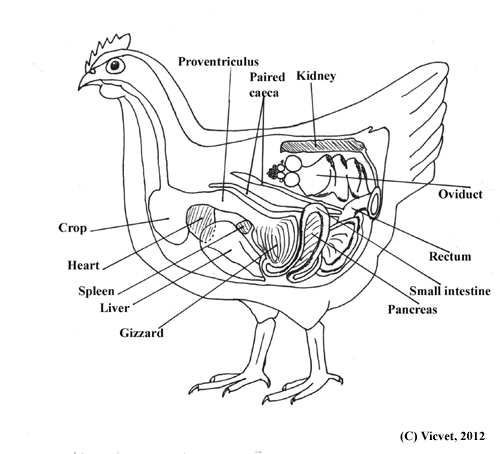Chicken Health and Disease *PRACTICAL TIPS ON HOW TO KEEP POULTRY HEALTHY INDOORS VIA ANY ORDER MADE BY THE CHIEF VET FOR PREVENTION AGAINST AVIAN INFLUENZA THAT IS CURRENTLY IN EUROPE. THE CURRENT REGULATIONS BEGAN IN NOVEMBER 2022 and have only been reduced with shows allowed in 2024. THE ANIMAL AND PLANT HEALTH AGENCY (APHA) IS SUPERVISING AND CONTROLLING OUTBREAKS OF DISEASE. AS OF SUNDAY 16TH FEBRUARY 2025 an Avian Influenza Prevention Zone (AIPZ)* with mandatory biosecurity measures is in force across Great Britain with additional mandatory housing measures in force in the following areas: DUE TO THE REDUCTION OF THE AVIAN INFLUENZA RISK TO POULTRY AND CAPTIVE BIRDS, PLANS HAVE BEEN ANNOUNCED TO LIFT THE AVIAN INFLUENZA PREVENTION ZONE (AIPZ) HOUSING MEASURES IN ENGLAND FROM 15 MAY 2025. Keepers intending to allow their birds outside after 15 May 2025, must take action now to prepare outside areas. Please check the information available on GOV.UK on how to do this. Shows are still banned, updates will be provided in due course. AS OF MONDAY 10TH FEBRUARY 2025 due to the increase of avian influenza outbreaks, poultry gatherings (sales and shows) are banned. We do not have a date for this to be lifted, it will depend on how many more outbreaks happen. It is imperative that your biosecurity is at its highest level in order to protect your flock. If you have already experienced lockdown, you get 10 out of 10, but most people have not listened to the advice given since the AI outbreak in 2006/2007 of keeping poultry and wild birds separate. The most dangerous wild birds are free-flying waterfowl as they carry AI without being affected. Other wild resident birds could also do so, thus excluding them is important as well. In its most pragmatic terms, ‘indoors’ means protection from wild bird faeces, so a covered run is better welfare for chickens than being shut in a dark shed, although the ventilation arrangement should let daylight in for eating and drinking. If you are lucky enough to have a roofed barn that can be set up with entertainment for the hens such as vegetables hung up, branches to climb on and feed blocks to peck at etc. this will help them adjust from free-range until the prevention restrictions are lifted and avoid conflict. Your hens will need to be either contained in their hut until the zone is lifted, or you can provide them with a covered run for fresh air and entertainment, the top of the run must be solidly covered, a tarpaulin would be the quickest solution, set at a slight angle for water run-off. Build something temporary and don’t forget where ever you put them to add entertainment e.g. branches for climbing, vegetables hung up etc. Polytunnels are excellent as long as ventilation is good so that the birds do not get too hot. Geese are less likely to put up with “indoors” unless it is a polytunnel (protect the sides from nibbling bills), so an outside close-mesh netted enclosure could be needed for waterfowl. Suggest that you get builders’ type small mesh and put it over the run on a central pole, like a marquee in case it snows. This will also limit the amount of faeces that wild birds bring/drop in as the only place they can perch will be on the central pole and a bit round the edge. Hanging old CDs on string from strategic points will scare off most wild birds if there is any sort of breeze as the CDs will flash as they turn. Geese can be fed from deep bowls with wheat covered by water which discourages wild birds of the jackdaw and pigeon varieties, but where wild mallard congregate, this is obviously not effective or sufficient. In any case, add cider vinegar to the water (50ml:500ml, plastic drinkers only) during the restrictions as an immune boost. Since the welfare of the birds is entirely in your hands, if you follow the guidelines on this website you will have healthy and happy birds – they will repay your care giving much enjoyment and fresh and delicious eggs. If you understand how a bird works, you are more likely to keep the husbandry standards high as the reasons for so doing make for healthier birds:
Food is taken in at the mouth, travels to the crop with some saliva where it is stored. Small amounts of food are passed to the proventriculus (acid-producing stomach) and then to the gizzard where it is ground up by already-eaten grit. Food then passes into the small intestine for digestion. The two blind-ended parts of the gut, the caeca, are where a certain amount of fermentation of herbage takes place. The contents of the caeca are expelled about one in ten to normal droppings (about twice daily) and are a different colour and consistency. The paired kidneys produce white solid waste matter called urates, deposited with normal droppings.
Birds have a one-way breathing system, the pressure maintained by the airsacs. A bird does not need to stop for breath in the middle of a song (think bagpipes). |





